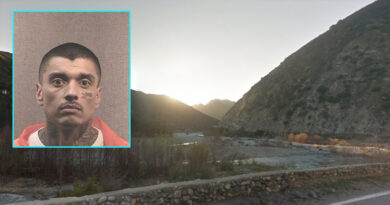450 arrested, 39 victims rescued, including children in California anti-human trafficking operation
(The AEGIS Alliance) – Authorities arrested hundreds and rescued dozens of juvenile and adult victims throughout an annual statewide operation to fight against human trafficking, Los Angeles law enforcement agencies said in a press release on Thursday.
More than 100 federal, state, and local agencies and task forces took part in “Operation Reclaim and Rebuild” throughout California, between January 26 and February 1, the Los Angeles Police Department announced.
The statewide effort resulted in the arrests of 450 individuals, 51 of them were for an alleged felony criminal charges. During the weeklong operation, 39 victims have been rescued, including 13 youngsters.
Those figures had been announced throughout a joint news conference late Thursday morning involving LAPD, the Los Angeles County Sheriff’s Department, and the L.A. County District Attorney’s Office, amongst others.
Officials put the focus on the number of arrests and rescues in the course of the operation that represents only a fraction of the total made throughout the last year.
The captain recounted a number of instances from the latest operation. “There are still operations that take place 365 days out of the year as well,” L.A. sheriff’s Capt. Michael Hannemann mentioned.
There was one from January 26, when a missing 15-year-old girl from Nevada was rescued after investigators with the San Luis Obispo County’s counter-human trafficking answered an internet sex advertisement and arranged to meet up. Additionally, authorities had been able to apprehend her suspected trafficker following a short pursuit, Hannemann said.
That same day, LAPD vice officers rescued three young female victims after seeing them “engaging in possible commercial sex activity” close to 76th and Figueroa streets, within the Vermont Knolls neighborhood of South Los Angeles, the captain stated.
A car approached them and the three drove away. A traffic stop was carried out on the automobile and officers detained three males and the three victims, two of whom were minors. Investigators determined that one of the males had been trafficking the women, resulting in his arrest.
And on January 28, investigators with the Sacramento and Elk Grove police departments had been engaged in an operation specializing in child molesters and trafficking when they found a sex advert involving a 21-year-old. The girl was identified from an earlier case to have been developmentally disabled.
Detectives arranged a date to meet with the victim, hoping she’d be dropped off by her trafficker. That led to the 21-year-old being rescued and brought to a safe house, and the arrest of a female suspect on suspicion of human trafficking.
Authorities didn’t make the names of any of the arrestees public in those incidents.
In Los Angeles County, there wasn’t a decline in commercial sex activity, even with the COVID-19 pandemic that spurred a sequence of stay-at-home orders.
“While the pandemic has kept many of us at home with our families, the brutal reality is that commercial sex has continued over the last year,” mentioned Deputy District Attorney Guillermo Santiso, the supervising lawyer for the DA’s human sex trafficking section.
He noted that despite the fact that the number of cases filed seemed to be decreasing in 2020, that was not essentially an indicator that commercial sex activity declined.
“Based on my experience, it has increased,” Santiso stated. “And resources have been diverted due to civil unrest and the pandemic that caused there to be this decrease in the filings.”
Cases had been on the rise the year prior in California, based on figures from the National Human Trafficking Hotline.
In 2019 when its numbers were last updated, the hotline estimated no less than 1,500 cases had been reported within the state of California. That was almost double the number of cases from a year earlier.
“California is one of the largest sites of human trafficking in our country, with Los Angeles still a hotbed of activity,” L.A. City Councilman John Lee stated at Thursday’s briefing.
“Now criminal street gangs have gotten involved because it’s become more lucrative than trafficking weapons and drugs.”
KTLA reported that in 2020, “Operation Reclaim and Rebuild” netted 518 arrests and the rescue of 87 victims throughout the state; and in 2019, the same operation resulted in 337 arrests and 48 rescues.
Just this week, the Riverside County Sheriff’s Department said an anti-trafficking operation there resulted in 64 arrests and two victims rescued.
Kyle James Lee – The AEGIS Alliance – This work is licensed under a Creative Commons Attribution-ShareAlike 4.0 International License.














